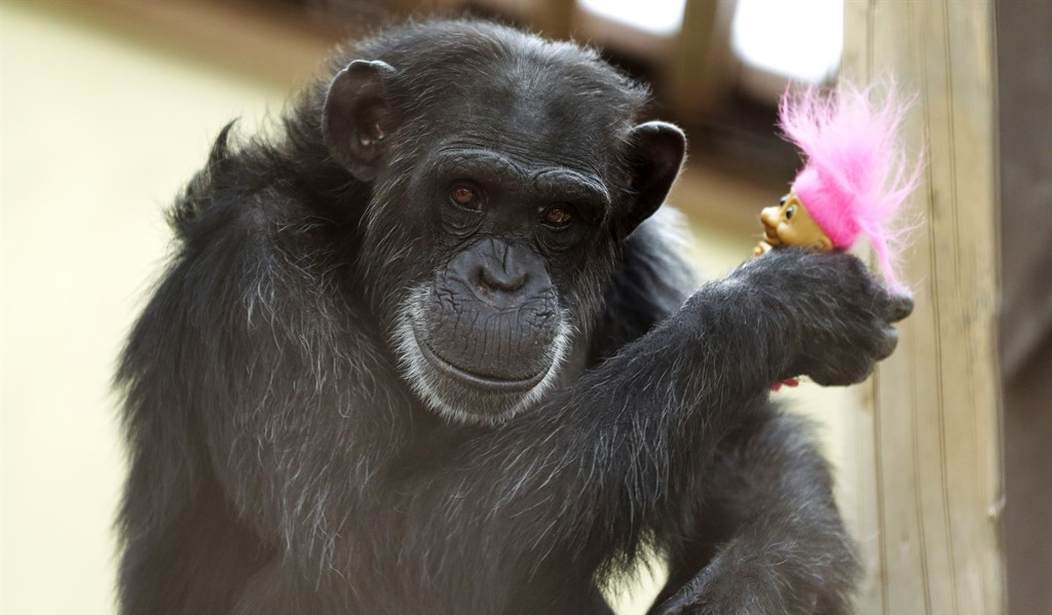A new paper published in the journal Nature this week caught the attention of the New York Times. The paper is titled, “The evolution of same-sex sexual behaviour in mammals,” and it deals with pretty much you would expect from such a description, though it goes much further than just mammals. I was originally a bit surprised that the paper wasn’t published during pride month so the Gray Lady could really celebrate it, but one of the paper’s authors told reporters that their findings really “don’t shed any light” on human sexuality at all. Same-sex attraction in other animals probably showed up later in the evolutionary process and it likely developed as a mechanism to reduce conflict and minimize aggression between members of the same species. Just to clarify one bit of snark in the title of this post, the paper’s authors don’t actually refer to any of the animals in the study as “gay.” (Sorry, LGBTQXYZ folks.)
In more than 1,500 animal species, from crickets and sea urchins to bottlenose dolphins and bonobos, scientists have observed sexual encounters between members of the same sex.
Some researchers have proposed that this behavior has existed since the dawn of the animal kingdom. But the authors of a new study of thousands of mammalian species paint a different picture, arguing that same-sex sexual behavior evolved when mammals started living in social groups. Although the behavior does not produce offspring to carry on the animals’ genes, it could offer other evolutionary advantages, such as smoothing over conflicts, the researchers proposed.
You can read the original paper here, though it’s a bit dense if you’re not a biologist. The authors refer to same-sex attraction in animals as both a “conundrum” and a “Darwinian paradox.” To my way of thinking, the fact that it was seen at all, to say nothing of showing up in more than 1,500 species, was rather shocking. I had long assumed (apparently incorrectly) that Mother Nature would have bred same-sex attraction out of all of the other animals. After all, if you’re not attracted to the opposite sex, you’re not going to be producing any offspring and passing along your genetic code.
As it turns out, it’s a lot more complicated than that. It’s not as common as the title might suggest, with this behavior showing up in roughly four percent of mammal species. And it’s almost unheard of in solitary creatures like tigers, while it’s far more common in social animals such as chimps and other nonhuman primates. (As already noted, it definitely shows up in humans as well, but the reasons seem to be different.)
Some explanation of how this behavior “mitigates conflict” is clearly in order. It seems that many of the more social species organize themselves in a way where one dominant male will fight off all of his competitors and claim mating rights with most if not all of the females in the group. Lions are infamous for killing off the young of lionesses that are not their own offspring. To put this in layman’s terms, that leaves you with a lot of “lonely” male lions hanging around. Their reproductive drive might eventually push them to keep attempting to fight the dominant male, leading to more injuries and possible deaths. But if they’re “spending time” with one of the other defeated males, they may be less prone to aggression and the “conflict mitigation” is achieved. Or at least that’s how I interpreted the explanation.
But that only explains the males. What about the females? The authors of the study found that in some species, same-sex sexual behavior was observed in only one gender, but in the majority of cases, it was observed in both. This idea certainly doesn’t explain the situation with the lions because the females are still all being “serviced” and afforded the opportunity to reproduce. So why would you have any lesbian lionesses?
There’s much more in the study if you find it of interest. I certainly had some of my previous assumptions challenged. In humans, being gay clearly seems to be inherent in a certain percentage of the population, but it may not be able to be explained purely by genetics. But if you go to the zoo and see a chimpanzee flying a pride flag, be sure to snap a picture and send it to the editors of Nature. You’ll probably launch another five years of research.









Join the conversation as a VIP Member